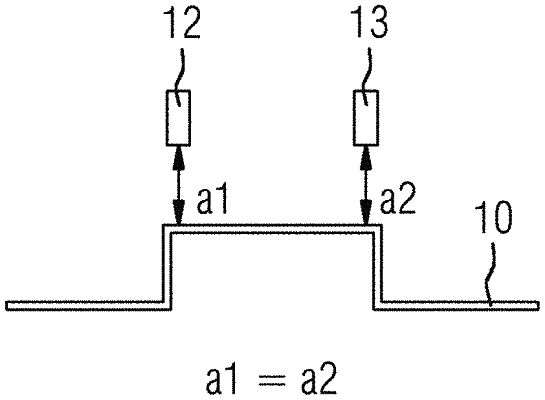| CPC B61L 25/025 (2013.01) [B61L 3/008 (2013.01); B60L 2200/26 (2013.01); B61L 3/006 (2013.01); B61L 23/00 (2013.01); B61L 25/026 (2013.01); B61L 2027/204 (2022.01)] | 13 Claims |

|
1. A system for ascertaining and optimizing a stopping point accuracy of a rail-bound vehicle, the system comprising:
at least one sensor unit arranged on the rail-bound vehicle;
at least one gap profile arranged at a stopping point towards which the vehicle travels;
at least one evaluating unit connected to said at least one sensor unit;
said at least one sensor unit including two sensors each being configured to measure a spacing distance from said at least one gap profile, the spacing distance being measured in a direction perpendicular to a travel direction of the rail-bound vehicle, and to transmit a measurement result with the respective spacing distance to said at least one evaluating unit; and
said at least one gap profile being disposed:
on a rail that is traveled on by the vehicle or on a track adjacent the rail, wherein a vertical gap between each of said sensors of said sensor unit and said gap profile is measured; or
on a surrounding wall adjacent the vehicle and located at the stopping point, wherein a horizontal gap defined by the spacing distance in a transverse direction perpendicular to a travel direction of the vehicle between each of said sensors of said sensor unit and said gap profile is measured; and
said at least one evaluating unit being configured to compare the vertical gaps measured by the two sensors to one another or to compare the horizontal gaps measured by the two sensors to one another and, if the vertical gaps or the horizontal gaps are identical, to conclude that the rail-bound vehicle has accurately stopped at a desired stopping point.
|